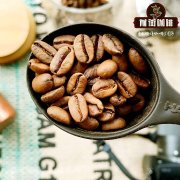A little knowledge about coffee trees how coffee trees grow and grow their own coffee trees.

Professional coffee knowledge exchange more coffee bean information please follow the coffee workshop (Wechat official account cafe_style)
There are more than 6000 species of coffee trees, most of which are tropical trees and shrubs. There are four main kinds of coffee trees in the world, of which only two are of real commercial value and have been planted in large quantities, and the quality of the coffee beans produced by them is also higher than that of other coffee trees.
The first is Arabica beans, the world-famous Blue Mountain Coffee, Mocha Coffee and so on, almost all of them are Arabica. The other is the Robasta species, which originated in the Congo in Africa. Different varieties of coffee beans have different flavors, but even the same varieties of coffee trees are affected by different soils and different climates. The coffee beans grown also have their own unique flavor. The other two species are Liberian species and Esselsa species.
Coffee, as a perennial evergreen shrub or small tree of Rubiaceae, is a horticultural perennial cash crop. The life of a coffee tree is generally divided into these stages:
(1) the seedling stage
The seedling stage is a period from the germination of seeds (or cuttings, grafting) to the emergence of seedlings (the stage of raising seedlings in the nursery), about 0.5-1.5 years. After coffee seeds are sown, cotyledons begin to be unearthed after a period of germination, which takes about 30-100 days, and the length of time is closely related to temperature and humidity. After germination, the cotyledon seedlings should be transferred to a nutrition bag to raise seedlings, which takes 3-12 months to get out of the nursery.
(2) Young tree stage
The young tree period refers to the period from planting to putting into production, about 2-3 years. The main feature of this period is exuberant vegetative growth, which can draw 6-8 pairs of branches every year, centering on the growth of roots, stems and leaves, and the aboveground and underground parts expand rapidly to form an ideal plant structure in preparation for production.
(3) the first birth period
The first production period refers to the period from the beginning of production to the advent of high production, during which coffee begins to enter into reproductive growth, coffee trees grow vigorously, and there is a great demand for nutrients.
(4) flourishing period
The coffee tree usually blossoms in 3-4 years, which is similar to that of jasmine in appearance and smell. When it blooms, it grows in clusters on the branches, and the flowering period is 3-5 days. After the flowers bloom, they bear small green fruits, which ripen and turn red into ripe fruits that can be picked after a few months.
The skin of ripe fruit is red. Because its shape and color are similar to cherries, ripe coffee fruit is called coffe cherry in many places. Under the bright red pericarp, the peel, pulp and a sweet sticky yellow substance wrap the coffee beans.
Proper management can last about 30 years.
(5) Aging period
The growth is declining year by year, the economic life is nearing the end, and the coffee tree indicates that it is entering a period of aging. Its life span is closely related to climate, soil and management level, and there are still century-old coffee trees that can blossom and bear fruit.
End
Important Notice :
前街咖啡 FrontStreet Coffee has moved to new addredd:
FrontStreet Coffee Address: 315,Donghua East Road,GuangZhou
Tel:020 38364473
- Prev

In addition to hand flushing, the concentrated flavor of Italian style is also worth tasting.
Professional coffee knowledge exchange more coffee bean information please follow the coffee workshop (Wechat official account cafe_style) test espresso, do not overexert, do not force, to let their own body naturally love this smell. ESPRESSO doesn't add anything, and at least sips it up again. No matter how scared you are of espresso, you should give it to the coffee shop owner and yourself.
- Next

The types and characteristics of coffee trees how many kinds of coffee trees are there and what are the most common coffee trees
Professional coffee knowledge exchange more coffee bean information Please pay attention to the coffee workshop (Wechat official account cafe_style) what are the conditions for growing coffee trees? The origin of the coffee tree is Ethiopia in Africa. In botany, the coffee tree belongs to the evergreen tree of the subgenus Rubiaceae, and coffee beans, commonly known as coffee beans, are the seeds of the fruit of the coffee tree, just because they are shaped like
Related
- Beginners will see the "Coffee pull flower" guide!
- What is the difference between ice blog purified milk and ordinary milk coffee?
- Why is the Philippines the largest producer of crops in Liberia?
- For coffee extraction, should the fine powder be retained?
- How does extracted espresso fill pressed powder? How much strength does it take to press the powder?
- How to make jasmine cold extract coffee? Is the jasmine + latte good?
- Will this little toy really make the coffee taste better? How does Lily Drip affect coffee extraction?
- Will the action of slapping the filter cup also affect coffee extraction?
- What's the difference between powder-to-water ratio and powder-to-liquid ratio?
- What is the Ethiopian local species? What does it have to do with Heirloom native species?

